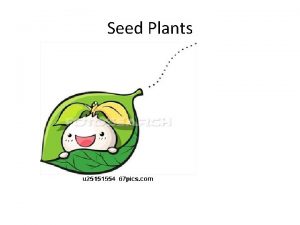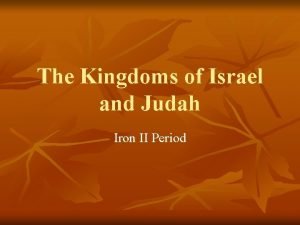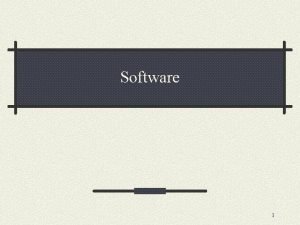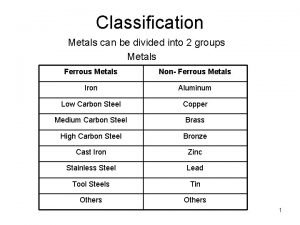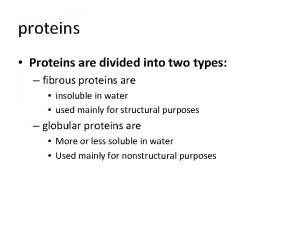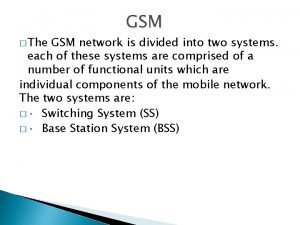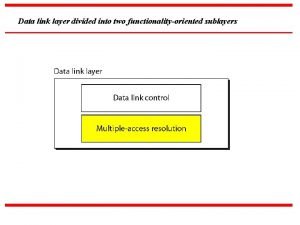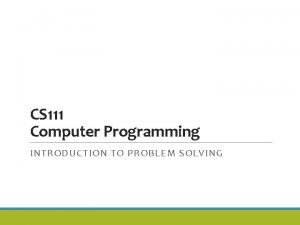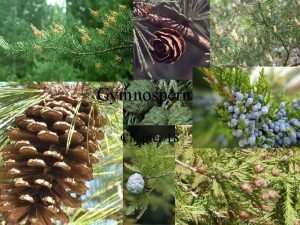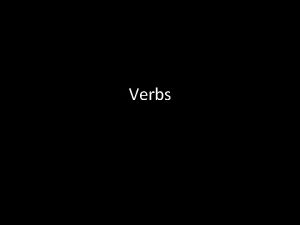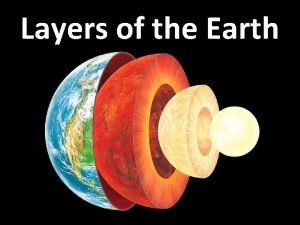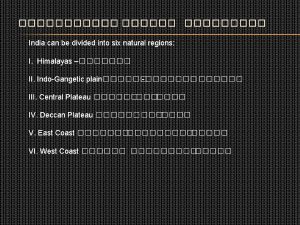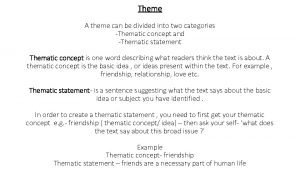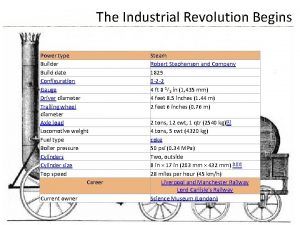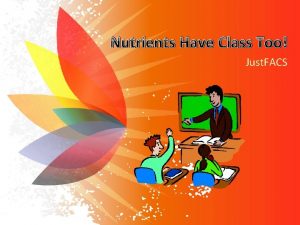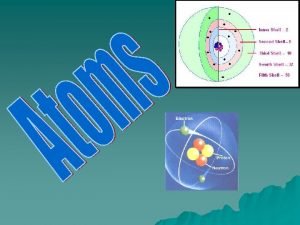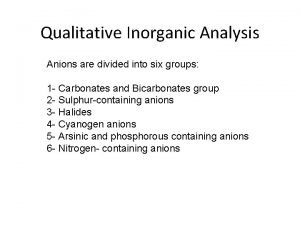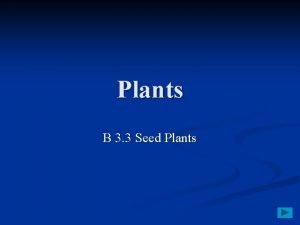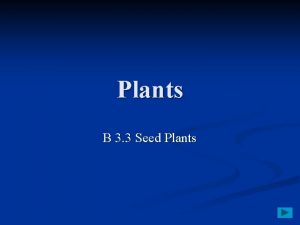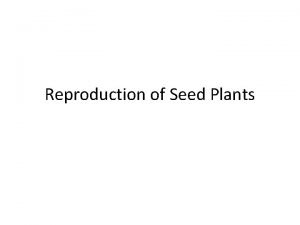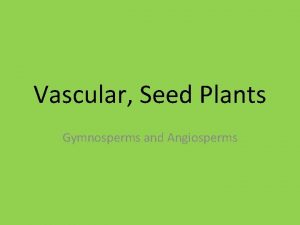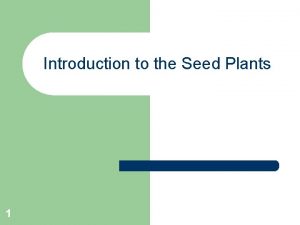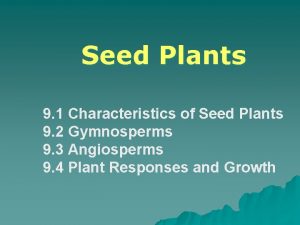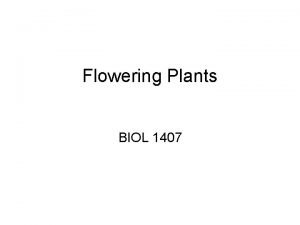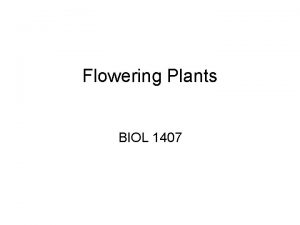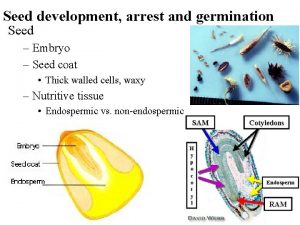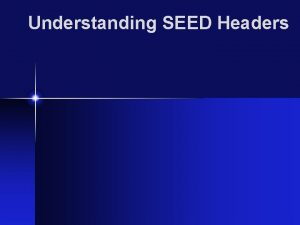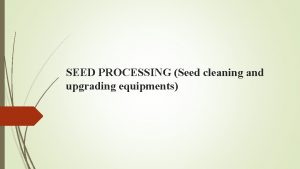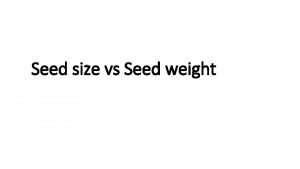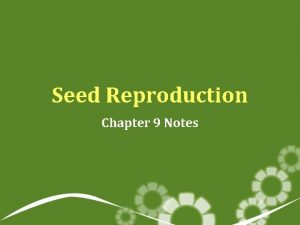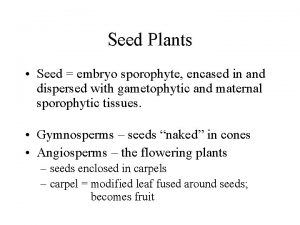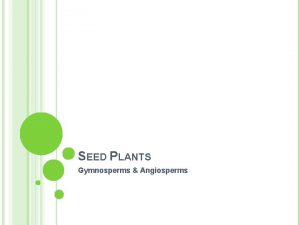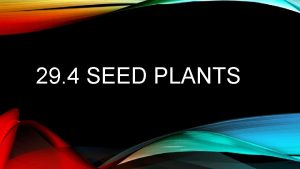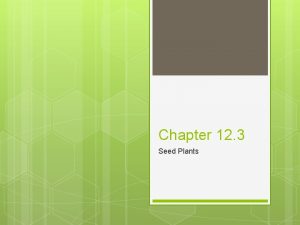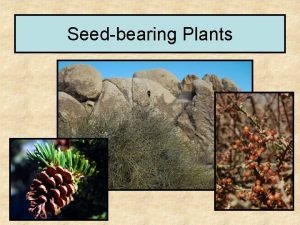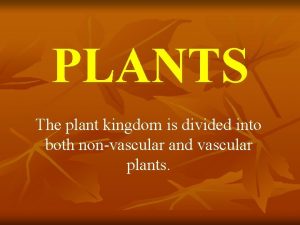Seed Plants Seed plants are divided into two


























- Slides: 26

Seed Plants

Seed plants are divided into two groups: • 1. gymnosperms – which bear their seeds directly on the surface of cones. • Gymnosperms include conifers such as pine and spruce, palmlike plants called cycads, ginkgoes, and the very weird gnetophytes. • http: //videos. howstuffworks. com/ discovery/30697 -assignmentdiscovery-gymnosperms-video. htm

Phylum Gymnosperm • Gymno = naked sperma = seed “naked seed” no covering around seed • Do not flower • Produce cones (acorns, pine) • Shallow roots and woody stems • Leaves are needle-like and are replaced every 2 – 4 years.

Gymnosperm continued • Needles retain moisture even during cold seasons. • Grow all year • Can grow in harsh environments (cold, poor soil) • Used for lumber, making paper, wood chips

Pollen cone Seed Cone

• The pollen falls down into the seed cone and fertilization results in a zygote which grows into an embryo inside a seed. • As the seed ripens, the cone opens and releases the seeds. If the ground is favourable, it will grow. • The pollen cone releases million of pollen into the air which is why allergies can be triggered in the spring.


Life cycle of a gymnosperm • Cones are either male or female: - female cone is the seed cone and found at the bottom of the tree - male cone is the pollen cone and found in the upper tree

Angiospermae • 2. Angiosperms (also called flowering plants) bear their seeds within a layer of tissue that protects the plant. • http: //videos. howstuffworks. com /discovery/27703 -assignmentdiscovery-angiosperms-video. htm

Angiospermae • Angio = covered seed sperma = seed Covered seed

• Produce flowers (which are unique reproductive systems)

• Soft stems (herbaceous) • Broad leaves (not needles) • Deep roots • Grow in summer only (deciduous)

Pollination • Pollination is the pollen moving from the male part of the plant to the female part of the plant.

Pollination can take place in 2 ways: 1. Self-pollination: occurs in some flowers. Pollen from the anther fertilizes the ovule (egg) of the same plant. 2. Cross-pollination: a. birds, insects feed on the nectar. – attracted to flower colour, scent, shape therefore they go to the same type of flower – carry pollen from plant to plant while feeding

b. wind - blows pollen around

Success of angiosperm is due to: • Flowers – Do not have to depend on wind or water to fertilize/reproduce • Fruit – The wall of tissue that surrounds the seed protects it and is usually delicious. As a result, they are often eaten. By the time the seeds have cleared the animal’s digestive system and are ready to sprout, they may have travelled many kilometers.


Angiosperm are categorized in 3 ways: 1. Monocots (Monocotyledon)and Dicots (Dicotyledon) Monocots and dicots are named for the number of seed leaves or cotyledons in the plant embryo.

Seeds of the dicot (left) and monocot (right)




• Add to chart the chart above (see page 570 in your text: Monocots Dicots Fibrous root Taproot

Another way to group angiosperms 2. By their stems: Woody or herbaceous Woody: trees, grapes, some ivy, blueberries, roses Herbaceous: dandelions, petunias, sunflowers

Herbaceous and Woody

Another way: 3. Annuals, biennials, perennials Annuals: Complete their life cycle in one year (grow, flower, produce seeds and die in one year Biennials: complete their life cycle in two years Perennials: live for more than 2 years
 Seed plants are divided into two groups what are they
Seed plants are divided into two groups what are they Mikael ferm
Mikael ferm Kingdoms of israel and judah
Kingdoms of israel and judah Software is divided into two categories
Software is divided into two categories Israel divided into two kingdoms
Israel divided into two kingdoms Divided into two types
Divided into two types List two main groups into which metals can be divided
List two main groups into which metals can be divided Proteins are divided into two groups
Proteins are divided into two groups What are the two groups of forces
What are the two groups of forces The gsm network is divided into
The gsm network is divided into Data link layer divided into two sublayers
Data link layer divided into two sublayers A typical programming tasks can be divided into two phases
A typical programming tasks can be divided into two phases Due process can be divided into two distinct categories
Due process can be divided into two distinct categories Ginkophyta
Ginkophyta Infinitives latin
Infinitives latin Into what parts is scotland divided geographically
Into what parts is scotland divided geographically Part of earth
Part of earth India is divided into how many natural territories
India is divided into how many natural territories Aca student liability insurance
Aca student liability insurance Divided by two theme
Divided by two theme Industrial revolution
Industrial revolution Motifs in the bluest eye
Motifs in the bluest eye The lithosphere is divided into
The lithosphere is divided into The eiffel tower is divided into three sections
The eiffel tower is divided into three sections Macrominerals
Macrominerals The smallest particle of an element is called
The smallest particle of an element is called Analysis of anions
Analysis of anions
